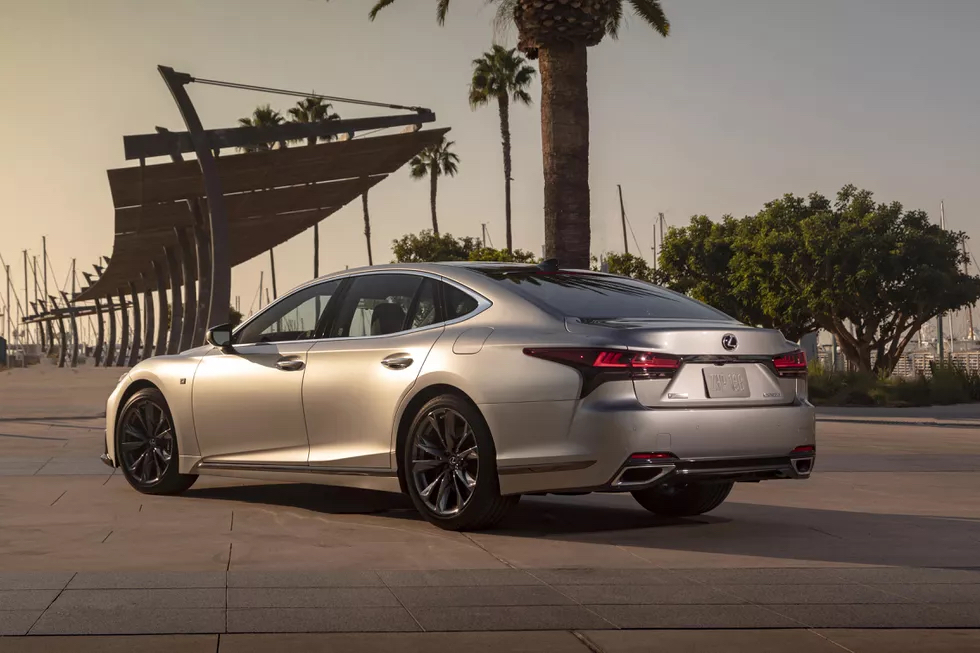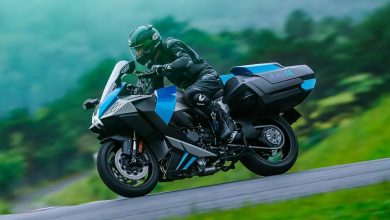2021 Lexus LS Ups The Refinement With Recent Facelift
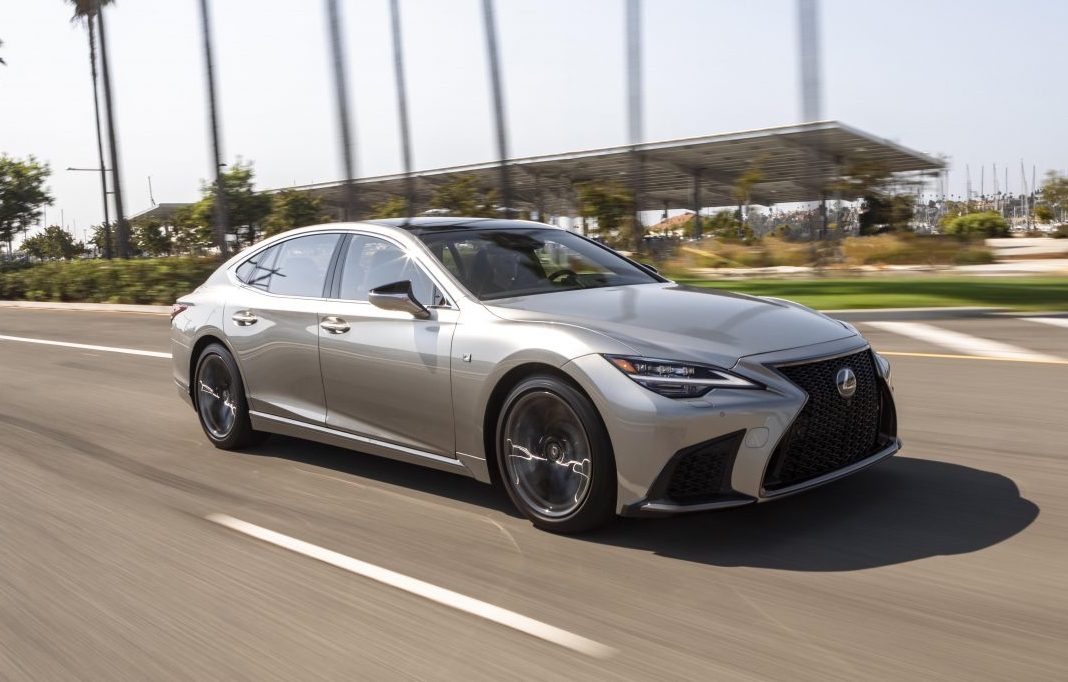
The flagship Lexus sedan is now more refined than ever before.
Lexus has recently updated its flagship LS sedan, adding more refinement and luxury to this already quality product. While it might still not sway most buyers from the conventional German offerings, those who are willing to stray away from the norm may be more than satisfied with this newly revised Japanese premium luxobarge.
Compared to the outgoing model that first debut in 2018, the one big highlight on this most recent update will probably be the notable addition of a new central infotainment touchscreen to the LS. Much like Mazda, Lexus has always preferred the use of haptic touchpad and a wide array of knobs and switches to control its infotainment system. While there is some merit to the use of physical controls, the system featured here before has always been widely panned by owners and reviewers alike.

Therefore, this recently revised model features a new 12.3 inch Remote Touch Interface central touchscreen with Apple CarPlay and Amazon Alexa integration. First seen on the revised variants of the smaller IS and RX models within the Lexus lineup, this new system is said to be a marked improvement over the outgoing platform. Continuing on the topic of screens, the digital rearview mirror is now also upgraded to a higher resolution variety, and the revised LS will be available with an optional 24-inch colour heads-up display (HUD).

For the most part though, the changes to the LS have all been made under the skin. Incorporating the new Lexus Driving Signature, subtle tweaks have been made all over this Japanese luxury sedan to just improve it by just a little bit in every single way.
Starting from the drivetrain, while the 416 hp/600 Nm 3.5 litre twin-turbo V6 still remains in the petrol-powered LS500, new-shape pistons and revised waste gate controls promise quieter running. The 10 speed automatic transmission has also had its shift logic recalibrated for increased responsiveness.
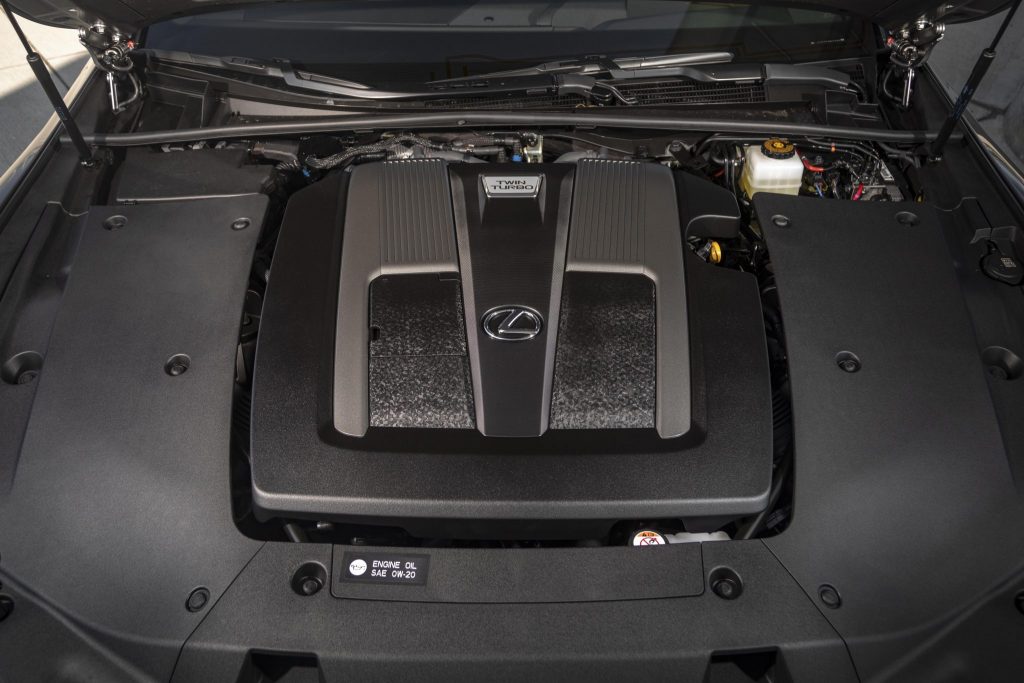
On the LS500h meanwhile, the 354 hp Multistage Hybrid System, that comprises of a 3.5 litre naturally aspirated V6 and twin electric motors, have too been given a fettle with a new battery strategy, thereby enabling more power to be driven through the electric motors for better acceleration.
As for the ride and handling improvements, the refreshed LS gains thicker front and rear anti-roll bars, larger front and rear liquid-filled bushings and revised spring and damper rates. A throughly redesigned Adaptive Variable Suspension (AVS) system is also featured with this update. All these changes have lead Lexus to claim that the new LS an even plusher ride than before.
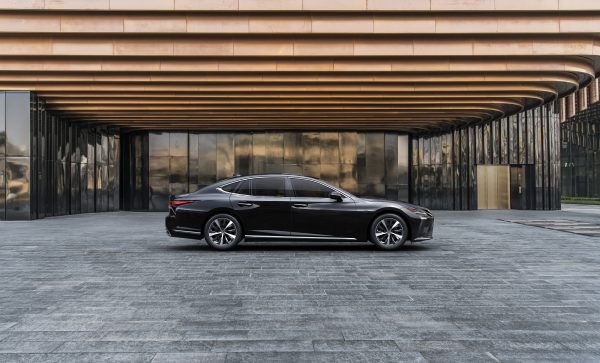
Speaking of plush, the interior of the revised Japanese luxury sedan too has not been left out of the subtle improvements. Aside from the aforementioned tech upgrades, additional foam has been added to many parts of the interior for a plusher feel. The seats have also been redesigned with new springs for added passenger comfort.
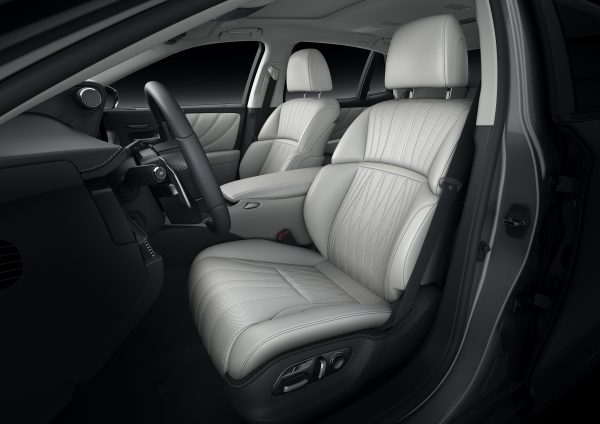
Moreover, the exterior of the LS has also given some minor tweaks to freshen up the looks. Up front, a slightly reworked front fascia is now flanked by subtly altered tri-LED projector headlight clusters. At the rear meanwhile, the chrome trim within the tail light clusters have been painted black for a slightly more aggressive look.

For those who want an even more aggressive looking LS, the F Sport trim level is then perhaps the one to go for. A bespoke radiator grille colour and deeper side skirts is complemented by the larger 20-inch F Sport alloys wrapped in low profile performance tires.
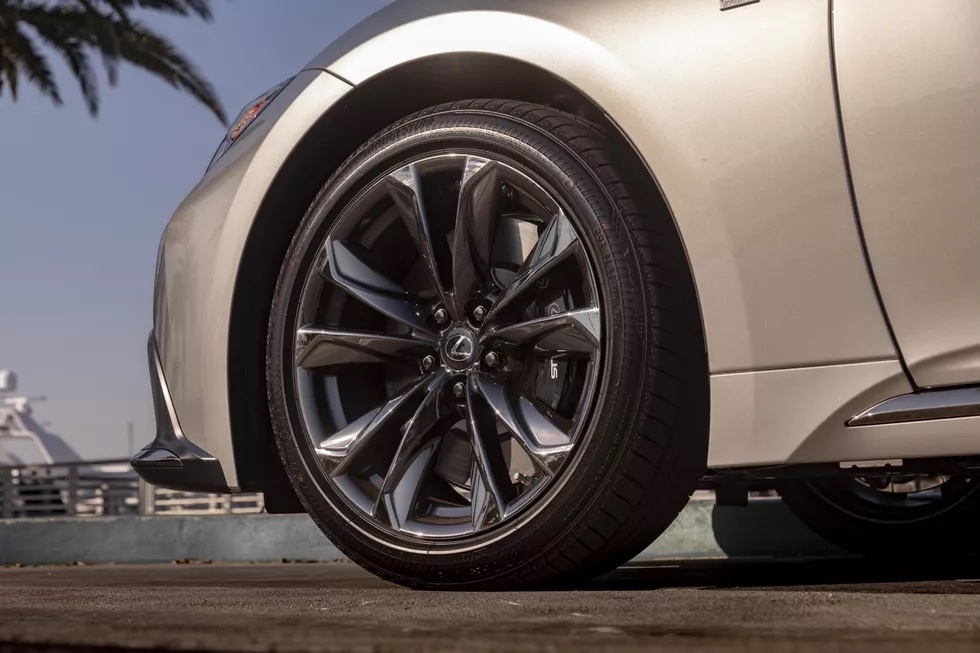
Hiding behind those mean looking alloys meanwhile are upsized front and rear brake rotors from the standard model, clamped onto by six-pistons callipers up front and four-pots out the back. Other performance additions on the F Sport include the Dynamic Handling Package, which adds Variable Gear Ratio Steering (VGRS) system, Active Rear Steering and an Active Stabilizer Suspension system. Not to mention a bright red and black two-tone interior.
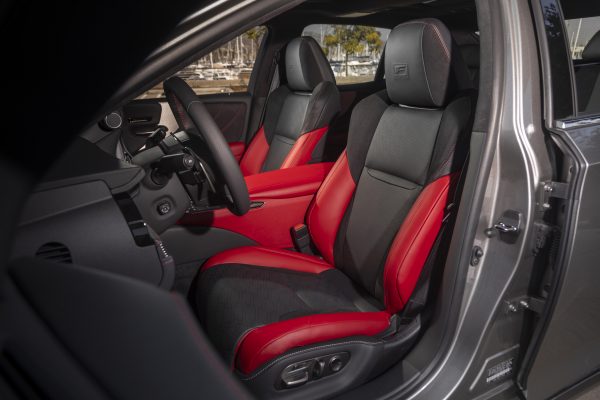
Petrol versions of the revised Lexus LS will begin arriving in dealerships beginning late November 2020, whereas the Hybrid models will arrive in early 2021. Prices have yet to be announced for the hybrid variant, but the petrol-powered LS500 is set to cost from $76,000 (RM 312,000).
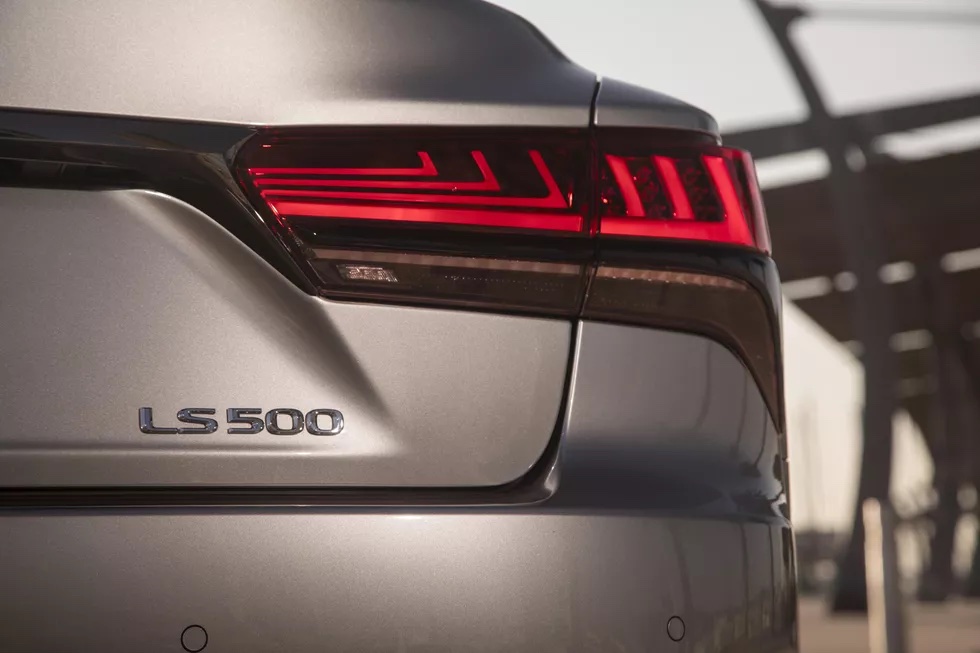
PRESS RELEASE: Creating an iconic vehicle to set the tone for a luxury automaker is no simple task. The first-generation LS debuted in 1989 with this monumental goal to help shape the brand. It built the foundation of Lexus with the high praise earned by its exceptional quietness and comfort. Chief Branding Officer and Master Driver Akio Toyoda positions the LS―in all its generations―as “a model that gives rise to transformation through the spirit of constant innovation and by providing new technologies and value for the times.”
The 2021 Lexus LS looks to build on the success of the all-new LS that launched in 2018, adding additional refinement and technology to an already strong dynamic package. The LS, like all Lexus vehicles, relies on core principals of the brand such as Takumi craftsmanship, or a meticulous artisanship to its construction, and Omotenashi, an anticipatory hospitality that caters to a guest’s needs before they need them. The new LS will also incorporate a new philosophical change to its design known as the Lexus Driving Signature, which looks to set a new standard for vehicle development and refinement moving forward.
The 2021 Lexus LS 500 will begin arriving at dealerships in late November of 2020, with a starting MSRP of $76,000. LS 500h models are expected to arrive at dealerships in early 2021, and pricing will be announced closer to that time.
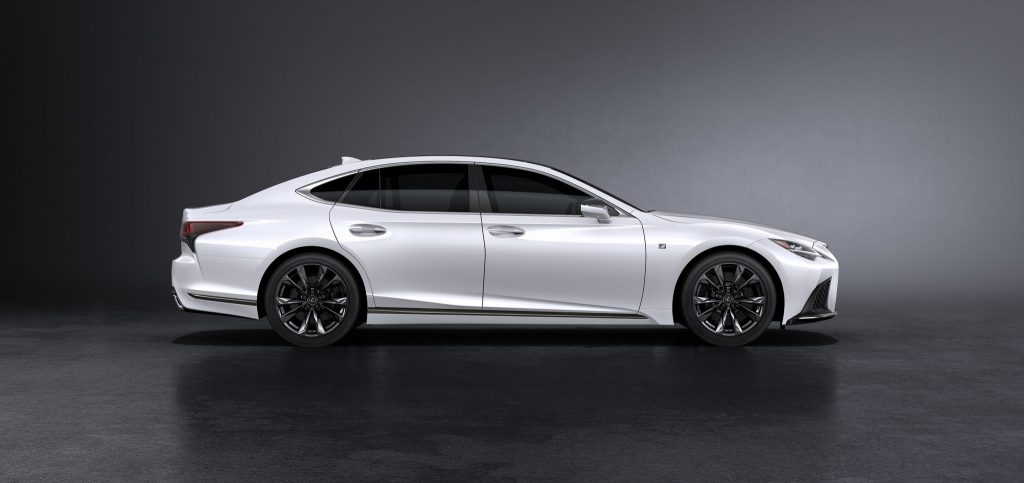
Dynamic Evolution
For the 2021 model year, Lexus engineers focused on elevating the LS sedan’s levels of comfort, quietness and overall refinement to help balance a range of new dynamic enhancements dictated by the brand’s Lexus Driving Signature. This philosophy applies detailed tuning, thoughtful component updates and control surface upgrades to help drive Lexus products to a new standard of vehicle control, balance and, ultimately, driver confidence.
Expanding on this, developed with the aim of greatly enhancing the exceptional quietness and comfort that represent the Lexus DNA, is the culmination of thorough craftsmanship applied to even the smallest component―all the way from the vehicle’s powertrain and suspension to the positioning of the stitch points of the seats.
“The LS, as a flagship, has constantly pursued innovation and has provided new technologies and value for its customers,” said Lexus International President Koji Sato. “In developing the new LS, we furthered the evolution of the exceptional quietness and comfort that has been a steadfast constant since the model’s first generation.”
Enhancing the Drive
The LS’s fundamental dynamic character, as defined by the Lexus GA-L platform, makes it the brand’s most capable sedan flagship to date. Subtle tuning of its control surfaces, the steering and the braking controls help give it more control, poise and help elevate driver confidence.
The key refinements on the latest LS include evolving the tuning of the suspension and chassis to help achieve a smoother, more comfortable ride without sacrificing any of the current model’s dynamic character. Several subtle, key underpinning modifications were made to enhance ride comfort. To this end, the suspension features revised spring and damper rates for improved damping performance. To better control vehicle body roll in turns, the diameters of the front and rear anti-roll bars have been optimized. For the 2021 model year, larger front and rear liquid-filled bushings also aid in creating an even plusher ride.
For added suppleness and enhanced handling stability, the Adaptive Variable Suspension (AVS) employs revised linear solenoids and control valves designed to provide low damping force via their enlarged internal flow path. In addition, the operation of the LS’s available ride-height-adjustable air suspension function that helps facilitate ingress and egress has been enhanced.

Impressive Powerplants
The 3.5-liter, twin-turbo V6 engine on the LS 500 offers the output one would expect in a flagship sedan: 416 horsepower and 442 lb-ft of torque. In the pursuit of refinement goals, the engine features a newly developed piston with a lip shape on the piston top to help realize low emissions and quiet operation when the engine is cold. The wastegate control on the twin-turbo engine has also been updated to provide stable opening and closing of the valve to improve performance efficiency. The 10-speed automatic transmission also receives attention, as its shift logic is re-calibrated to aid in keeping the engine in a more responsive area of its power band.
In RWD form, the LS 500 delivers a 0-60 time of 4.6 seconds. The driver can tailor powertrain response and feel by choosing from Eco, Comfort, Normal, Custom, Sport S or Sport S+ modes. The available AWD system features a Torsen® limited-slip center differential to further enhance grip, traction and cornering stability. The torque distribution can vary from 31 percent front / 69 percent rear on dry roads to as much as 48 percent front / 52 percent rear on slick surfaces.
The LS 500h (the “h” referring to hybrid) uses a Multistage Hybrid System that combines a naturally aspirated Atkinson-cycle 3.5-liter V6 gasoline engine with two electric motor/generators powered by a compact, lightweight lithium-ion battery. For 2021, an even more dramatic powertrain improvement has been made to the Multistage Hybrid System, as the system is now tuned to utilize a new battery strategy and drive more power through the electric motors upon acceleration. The Multistage shift software has also been updated to take advantage of this electric power appearing earlier in the powerband. Combined system output of the internal combustion engine with the electric traction system is 354 hp, enabling the LS 500h to accelerate from 0-60 mph in 5.1 seconds (RWD).
Next-Level Interior
As part of the effort to enhance the LS’s interior refinement, many subtle improvements were addressed in the cabin in the interest of elevating passenger comfort. Details such as armrests, seat cushions, center console armrest padding and other touch points receive additional foam material. The front seats have also been altered with revised seat springs and thicker cushioning material under a seat surface that offers stitching patterns designed to enhance comfort.
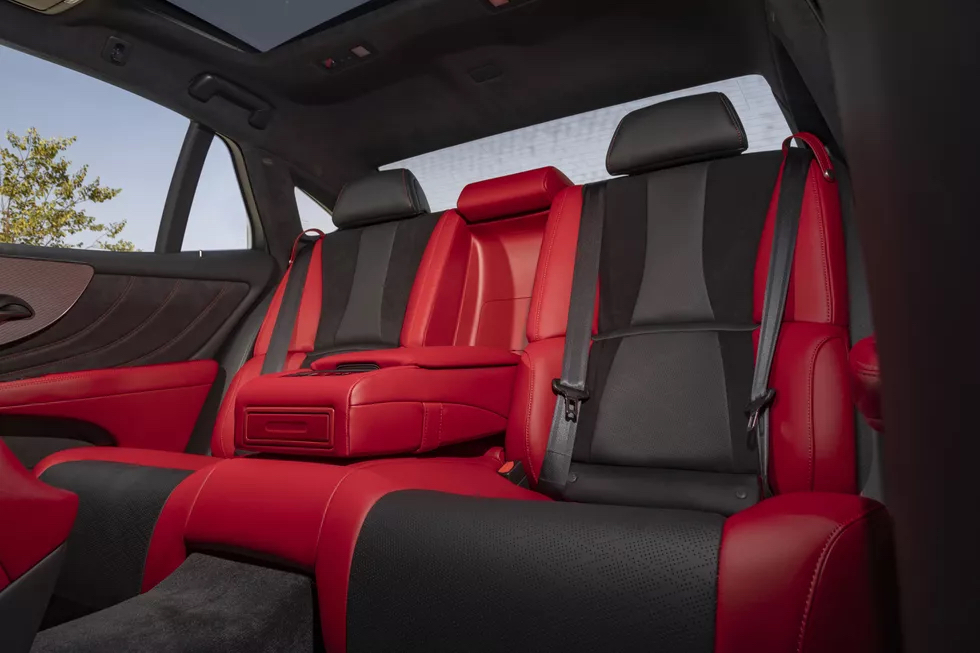
Controls on the steering wheel and center console have been uniformly colored black for improved visibility and a clear-cut impression. Also, a switch for displaying on the touch display the controls for the often-used seat heaters and steering wheel heater has been added to the center console for improved operability.
For 2021, a new Palomino Leather interior will be available, while new interior ornamentation options include Black Laser Special and Open Pore Black. On Executive models, the available Kiriko Glass ornamentation and available hand-folded pleats on the door trim perfectly illustrate the brand’s “Innovative elegance through Japanese craftsmanship” and exemplify a true handcrafted approach. The striking cut glass ornamentation – a world first in a production vehicle – draws inspiration from Japanese Kiriko glassware. Traditional Kiriko patterns are created using a technique that involves hand-cutting clear colors and delicate lines in a piece of glass, which are then repeatedly polished to a soft glow.
The new 12.3-inch multimedia touchscreen provide additional control options for driver and passenger. All LS models for 2021 come standard with Apple CarPlay® compatibility that allows guests to access the same familiar interface of their iPhone® through the LS’s 12.3-inch touchscreen display. It also features Android Auto® compatibility, allowing guests to access their Android device interface via the multimedia system. The LS also offers Amazon Alexa compatibility, as LS owners can ask Alexa for the same access to information and thousands of skills available through Alexa at home. Users can also control compatible smart home devices such as lighting, thermostat and security systems. Alexa can even sync to the navigation system to provide on-the-go recommendations.

Integrated into the LS 500’s cabin is the next-generation Remote Touch Interface (RTI). In addition to the 12.3-inch-wide touchscreen and navigation display, the LS can incorporate an optional 24-inch color heads-up display (HUD) that projects a variety of information onto the driver’s forward view. Dynamic Navigation, included as a three-year trial on all LS models, offers three key enhanced features that include Dynamic Map that features cloud-based map updates, Dynamic Routes that offer alternate routes based on the conditions ahead, and Dynamic POI Search that automatically sorts Points of Interest results based on relevance. For 2021, the digital rearview mirror features a larger high-resolution display for improved visibility of the area behind the vehicle.
While making the LS even more of a driver’s car, Lexus also optimized the LS as a car to be driven in, lavishing considerable attention to the rear seat. There are options for both heating and massage in addition to the Executive Package which adds a passenger-side seat which can be reclined up to 48 degrees, an angle chosen for its precise level of comfort.
Because this generation LS is lower than previous versions, Lexus equipped the available air suspension with an access function. Activated by unlocking the car with the smart key, access mode automatically raises the vehicle to make it easier to step into or get out of the LS.
Looking the Part
The LS offers a host of interior creature comforts for driver and passengers alike, and yet the careful attention to exterior detail ensures the LS is majestic at a standstill or while in motion. The front of the LS is adorned with an updated front bumper that features a redesigned front fascia, while the lower radiator air intakes are squared to express a sturdy stance. The color of the spindle grill has been changed to a dark metallic for a more elegant appearance befitting a flagship product. New 3-projector LED headlamps feature a vertically stacked layout. The deep headlamps and squarish sub-radiator grilles positioned to the outside help to form the confident nature of the vehicle’s stance.
At the rear of the 2021 LS, the chrome trim within the rear combination lamps has been switched to Piano Black to enhance the sense of the vehicle’s presence. The 2021 LS will be also offered in a new exterior color Iridium.
F SPORT Package
In the F SPORT version of the LS, the garnish of the sub-radiator grilles wraps around to the sides so as to underline the vehicle’s wide stance. Other elements that help to accentuate the F SPORT’s more dynamic image include a dedicated color for the spindle grille and 20-inch alloy wheels with 245/45RF20 front and 275/40RF20 rear tires in either summer performance or all-season compounds.
Lexus took full advantage of the new GA–L platform’s inherent driving agility when developing the F SPORT package. Handling enhancements via the latest iteration of the VDIM system allows for integrated management of these chassis dynamics as a single system. In addition, larger front and rear brakes — six-piston aluminum monoblock calipers with ventilated 15.7-inch rotors in front and four-piston calipers with 14.1-inch rotors in back — assure confident stopping power. The available Dynamic Handling Package on gas F SPORT models adds Variable Gear Ratio Steering (VGRS) system, Active Rear Steering and an Active Stabilizer Suspension.
Special F SPORT rocker moldings, along with the aforementioned 20-inch wheels, accentuate the rakish LS profile. Lexus infused the F SPORT persona throughout the cabin, starting with the perforated-grill pattern on seating surfaces and Naguri aluminum trim elements. F SPORT 28-way electric/pneumatic seats with passenger-seat power cushion-length extenders brace occupants when driving through curves, ensuring exceptional comfort no matter the length of the drive.
Advanced Safety Features and Driver Support
All grades of the 2021 LS feature Lexus Safety System+ 2.0 as standard equipment. The Pre-Collision System (PCS) included with LSS+ 2.0 employs both a millimeter wave radar and a monocular camera sensor system designed to detect a preceding vehicle, a bicyclist in daytime situations as well as a preceding vehicle and a pedestrian in both daylight and low-light situations.
The Lane Departure Alert (LDA) system is designed to alert the driver when it senses that the vehicle is deviating from its lane with audible and visual alerts, as well as steering wheel vibration. It’s also capable of providing a certain amount of steering assist to help keep the car from deviating from its marked lane.
The Lane Departure Alert with Lane Tracing Assist (LTA) system comes standard and is designed to detect visible lane markings to determine lane position and place the vehicle in the center of the lane when working in conjunction with the All-Speed Dynamic Radar Cruise Control. If road markings are not detected, LTA is also capable, in certain conditions, of following the car ahead of it. Road Sign Assist (RSA) is included as well and is designed to read certain road signs when available and display them on the multi-informational display.
The Lexus Safety System+ A offers additional equipment and is available as an option. Both systems, in addition to other technologies, help to support more secure driving in a broad range of situations, providing the driver with information ranging from support status notifications to information on vehicle behavior during safety feature operation via the multi-information display and, when equipped, the large color head-up display (HUD).
Lexus Safety System+ A encompasses an expanded response range of the Pre-Collision System (PCS). It includes Front Lateral Side PCS, which employs a lateral side radar designed to detect vehicles approaching diagonally in front of the Lexus. If the system determines a collision may occur, it warns the driver to perform evasive maneuvers. Additionally, Brake Assist is applied if the system determines there is a high probability for a collision, helping the driver avoid a collision or mitigate the impact force to occupants and the vehicle. Intersection Turning Assist is also newly added to LS for LSS+ A, which is designed to detect oncoming vehicles from the front when turning left at an intersection as well as crossing pedestrians approaching from the front when turning right or left. Front Cross-Traffic Alert (FCTA) is designed to, under certain circumstances, warn the driver of vehicles or bicycles approaching from the left or right at intersections.
Active Steering Assist (ASA) has the potential to help reduce the severity of, or prevent collisions with, a preceding pedestrian that may not be avoided through automatic emergency braking alone. The system is designed to detect certain situations where there is a high probability of a collision with a pedestrian in the vehicle’s lane of travel or with a continuous structure, such as a guardrail. If the system is able to recognize the lane markers on both sides of the vehicle, and the system determines that avoiding or mitigating a collision through brake control alone may not be likely, but that it might be avoided or mitigated with steering assist, the system assists in collision mitigation or prevention by providing a limited amount of automatic steering assist within the lane in addition to activating an alert and applying the brakes.
Lane Change Assist is added to Lane Tracing Assist. Lane Change Assist allows the vehicle to perform a driver-triggered and monitored lane change using the front camera, millimeter wave radar, front side radar sensor and Blind Spot Monitor sensor when Dynamic Radar Cruise Control and Lane Tracing Assist are in use. Lane Change Assist uses driver activation of the turning signal as a cue to engage, and supports lane changes by monitoring the surrounding road environment and, at the appropriate timing, controls steering as well as acceleration and deceleration.
